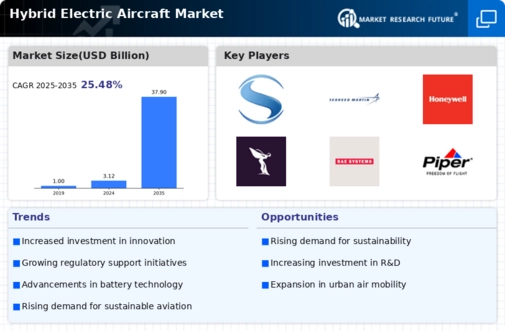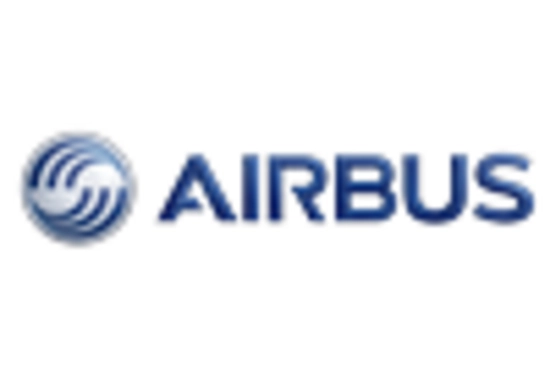Increased Demand for Urban Air Mobility
The Hybrid Electric Aircraft Market is witnessing a growing demand for urban air mobility solutions. As urban populations expand, traditional ground transportation systems are becoming increasingly congested. Hybrid electric aircraft present a viable alternative for urban transportation, offering the potential for reduced travel times and lower emissions. The development of eVTOL (electric Vertical Take-Off and Landing) aircraft is particularly noteworthy, as these vehicles are designed for short-distance travel within urban environments. Market forecasts suggest that the urban air mobility segment could reach substantial market size in the coming years, driven by advancements in technology and infrastructure. This trend is likely to further stimulate the Hybrid Electric Aircraft Market as stakeholders seek to capitalize on new opportunities.
Rising Fuel Costs and Economic Viability
The Hybrid Electric Aircraft Market is significantly influenced by rising fuel costs, which have made traditional aviation less economically viable. As fuel prices continue to fluctuate, airlines are increasingly looking for alternative solutions to mitigate operational costs. Hybrid electric aircraft offer a promising solution by reducing fuel consumption and operational expenses. Studies indicate that hybrid electric systems can lower fuel costs by up to 30%, making them an attractive option for airlines. This economic incentive is likely to drive investment in hybrid technologies, as operators seek to enhance profitability while maintaining competitive pricing. Consequently, the Hybrid Electric Aircraft Market is expected to expand as more airlines adopt these cost-effective solutions.
Technological Innovations in Battery Systems
The Hybrid Electric Aircraft Market is experiencing a surge in technological innovations, particularly in battery systems. Advances in lithium-ion and solid-state batteries are enhancing energy density and reducing weight, which are critical for aircraft performance. For instance, the energy density of lithium-ion batteries has improved significantly, reaching levels that support longer flight ranges and reduced charging times. This is crucial as the industry aims to meet the increasing demand for efficient and sustainable air travel. Furthermore, the development of fast-charging technologies is likely to facilitate quicker turnaround times at airports, thereby enhancing operational efficiency. As these innovations continue to evolve, they are expected to play a pivotal role in shaping the future of the Hybrid Electric Aircraft Market.
Environmental Regulations and Sustainability Goals
The Hybrid Electric Aircraft Market is being propelled by stringent environmental regulations and sustainability goals set by various governments. These regulations aim to reduce carbon emissions and promote cleaner aviation technologies. For example, the International Civil Aviation Organization has established targets for reducing greenhouse gas emissions from aviation, which has led to increased investments in hybrid electric technologies. The market is projected to grow as airlines and manufacturers seek to comply with these regulations while also appealing to environmentally conscious consumers. The push for sustainability is not merely a regulatory requirement; it is becoming a competitive advantage in the aviation sector. As a result, the Hybrid Electric Aircraft Market is likely to witness accelerated growth driven by these regulatory frameworks.
Collaborations and Partnerships in the Aviation Sector
The Hybrid Electric Aircraft Market is benefiting from increased collaborations and partnerships among key stakeholders in the aviation sector. Manufacturers, technology companies, and research institutions are joining forces to accelerate the development of hybrid electric technologies. These collaborations often lead to shared resources, knowledge, and expertise, which can significantly reduce the time and cost associated with bringing new technologies to market. For instance, partnerships between aerospace manufacturers and battery technology firms are becoming more common, facilitating the integration of advanced battery systems into aircraft designs. This collaborative approach is likely to enhance innovation and drive the growth of the Hybrid Electric Aircraft Market, as stakeholders work together to address the challenges of sustainable aviation.

















Leave a Comment